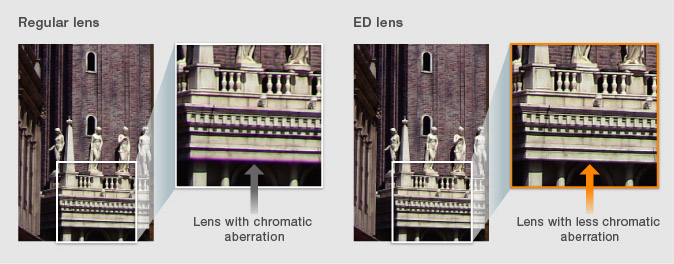|
With regular optical glass lenses, chromatic aberration generally increases as the focal length increases (such as in high-zoom ratio and telephoto lenses). This results in reduced contrast, increased colour fringe and an overall loss of detail. Extra-low Dispersion lenses, developed as a solution to this problem, are composed of ED glass featuring significantly lower dispersion and a lower refractive index than regular optical glass. ED glass also features uniquely irregular dispersion that dramatically reduces chromatic aberration. Even when shooting with a fully open aperture, Extra-low Dispersion lenses deliver crisp, clear, high-contrast images from corner to corner. Now that Sony employs these lenses, highly effective correction of chromatic aberration has become a reality. |
 |
 |
|